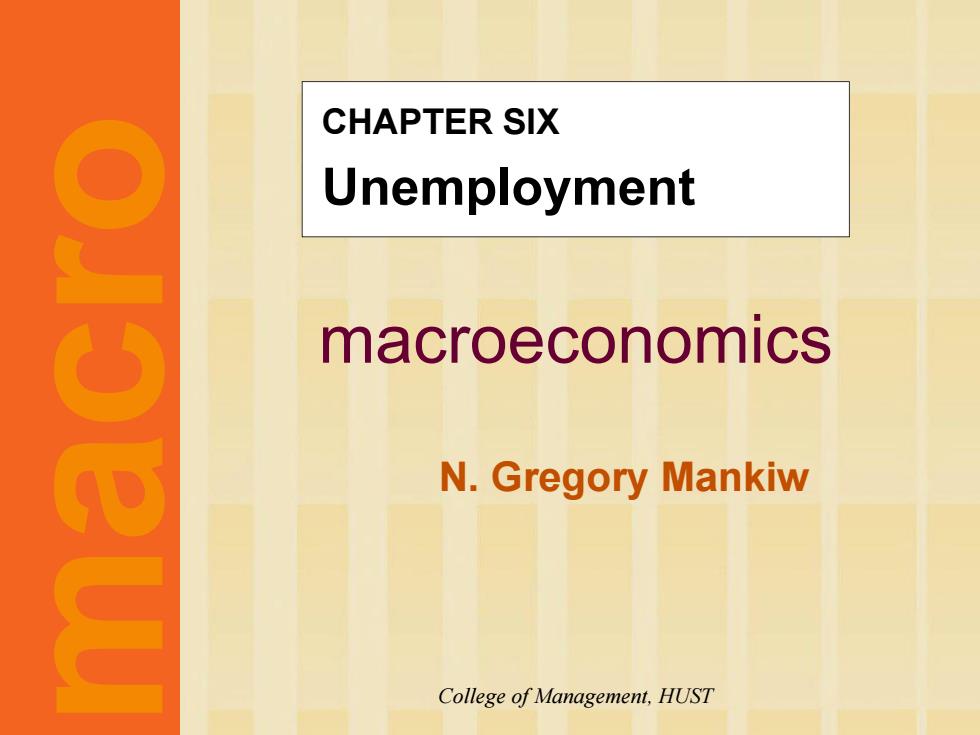
CHAPTER SIX Unemployment ooeu macroeconomics N.Gregory Mankiw College of Management,HUST
macroeconomics N. Gregory Mankiw macro College of Management, HUST CHAPTER SIX Unemployment
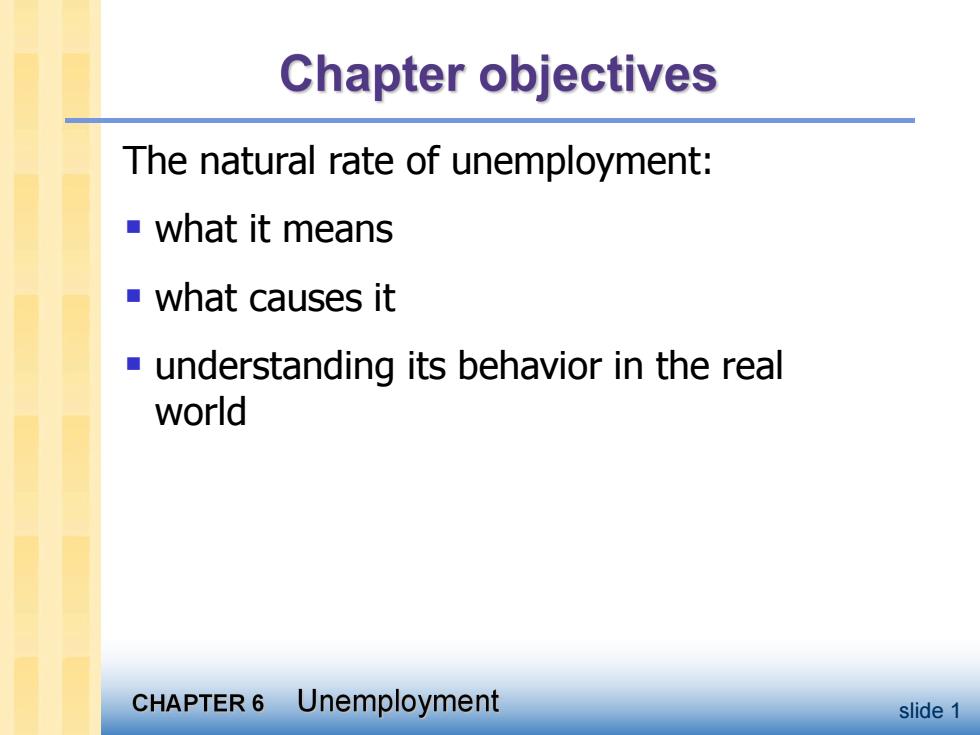
Chapter objectives The natural rate of unemployment: what it means ■what causes it -understanding its behavior in the real world CHAPTER 6 Unemployment slide 1
slide 1 The natural rate of unemployment: § what it means § what causes it § understanding its behavior in the real world
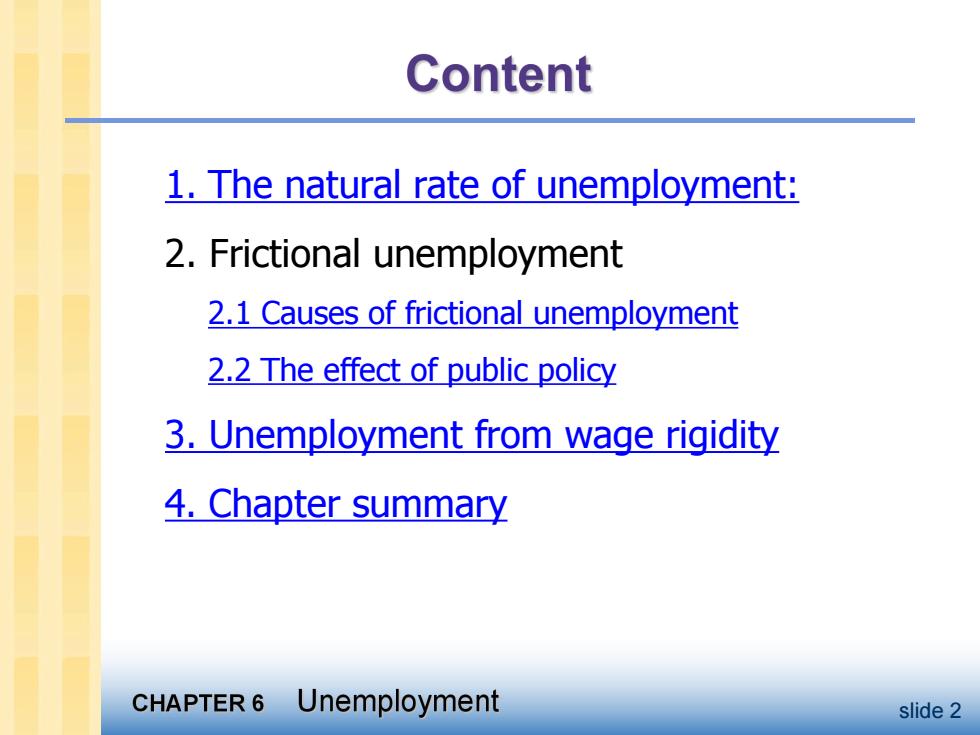
Content 1.The natural rate of unemployment: 2.Frictional unemployment 2.1 Causes of frictional unemployment 2.2 The effect of public policy 3.Unemployment from wage rigidity 4.Chapter summary CHAPTER 6 Unemployment slide 2
slide 2 1. The natural rate of unemployment: 2. Frictional unemployment 2.1 Causes of frictional unemployment 2.2 The effect of public policy 3. Unemployment from wage rigidity 4. Chapter summary
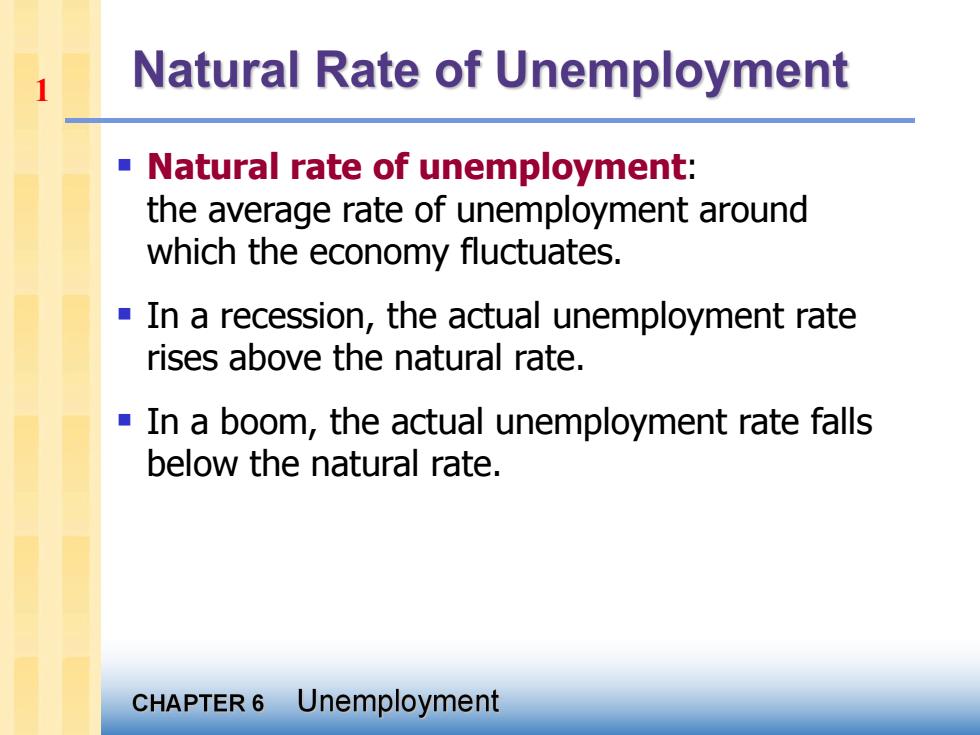
Natural Rate of Unemployment ■ Natural rate of unemployment: the average rate of unemployment around which the economy fluctuates. -In a recession,the actual unemployment rate rises above the natural rate. -In a boom,the actual unemployment rate falls below the natural rate. CHAPTER 6 Unemployment
§ Natural rate of unemployment: the average rate of unemployment around which the economy fluctuates. § In a recession, the actual unemployment rate rises above the natural rate. § In a boom, the actual unemployment rate falls below the natural rate. 1
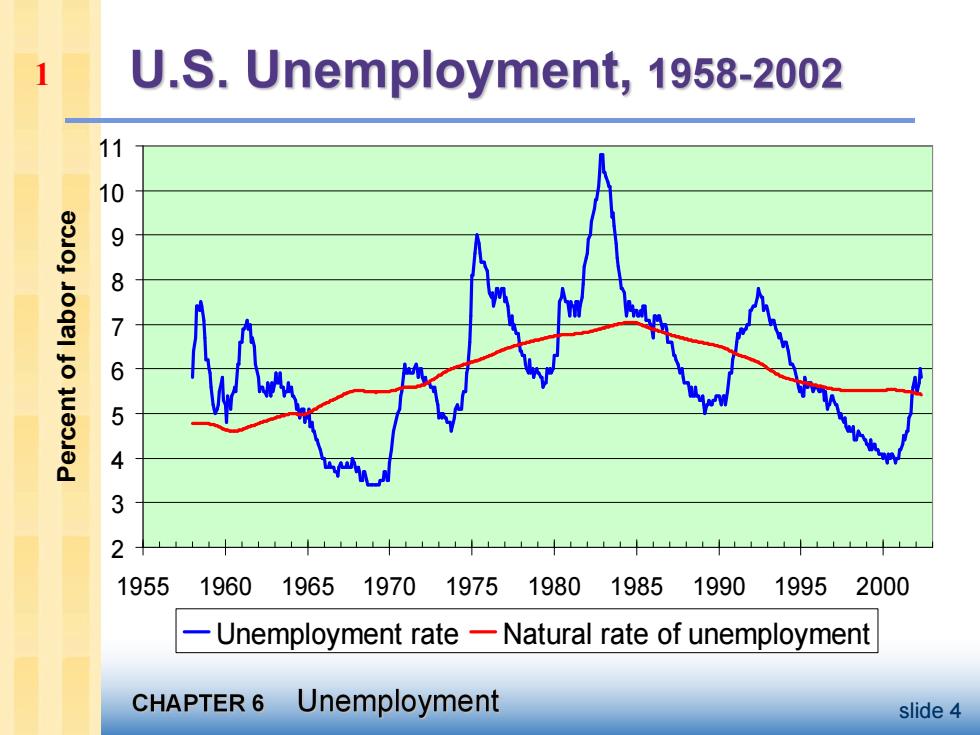
U.S.Unemployment,1958-2002 11 098 65 4 3 2 1955196019651970197519801985199019952000 -Unemployment rate -Natural rate of unemployment CHAPTER 6 Unemployment slide 4
slide 4 2 3 4 5 6 7 8 9 10 11 1955 1960 1965 1970 1975 1980 1985 1990 1995 2000 P e r c e n t o f la b o r f o r c e Unemployment rate Natural rate of unemployment 1
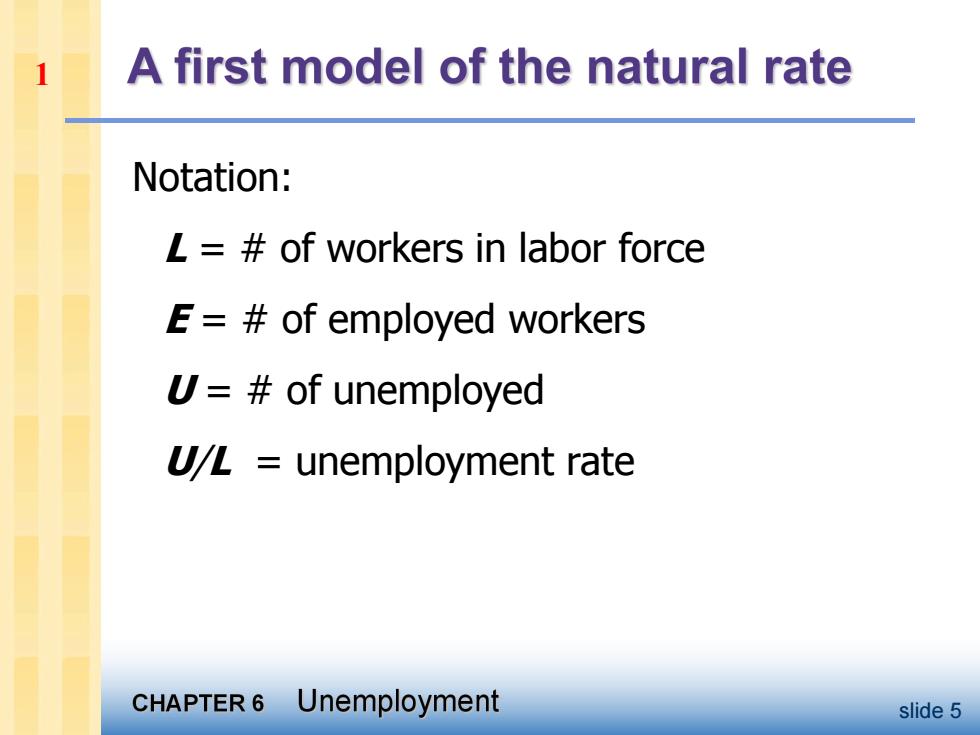
A first model of the natural rate Notation: L=#of workers in labor force E=#of employed workers U=#of unemployed UL unemployment rate CHAPTER 6 Unemployment slide 5
slide 5 Notation: L = # of workers in labor force E = # of employed workers U = # of unemployed U/L = unemployment rate 1
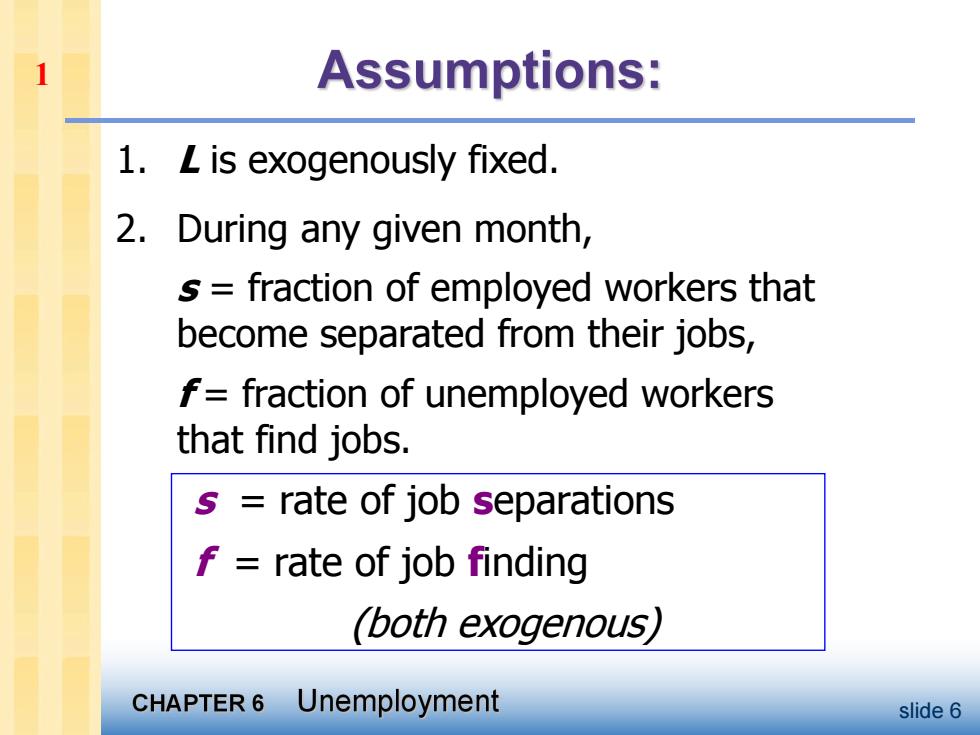
Assumptions: 1.L is exogenously fixed. 2.During any given month, s fraction of employed workers that become separated from their jobs, f=fraction of unemployed workers that find jobs. s rate of job separations f=rate of job finding (both exogenous) CHAPTER 6 Unemployment slide 6
slide 6 1. L is exogenously fixed. 2. During any given month, s = fraction of employed workers that become separated from their jobs, f = fraction of unemployed workers that find jobs. s = rate of job separations f = rate of job finding (both exogenous) 1
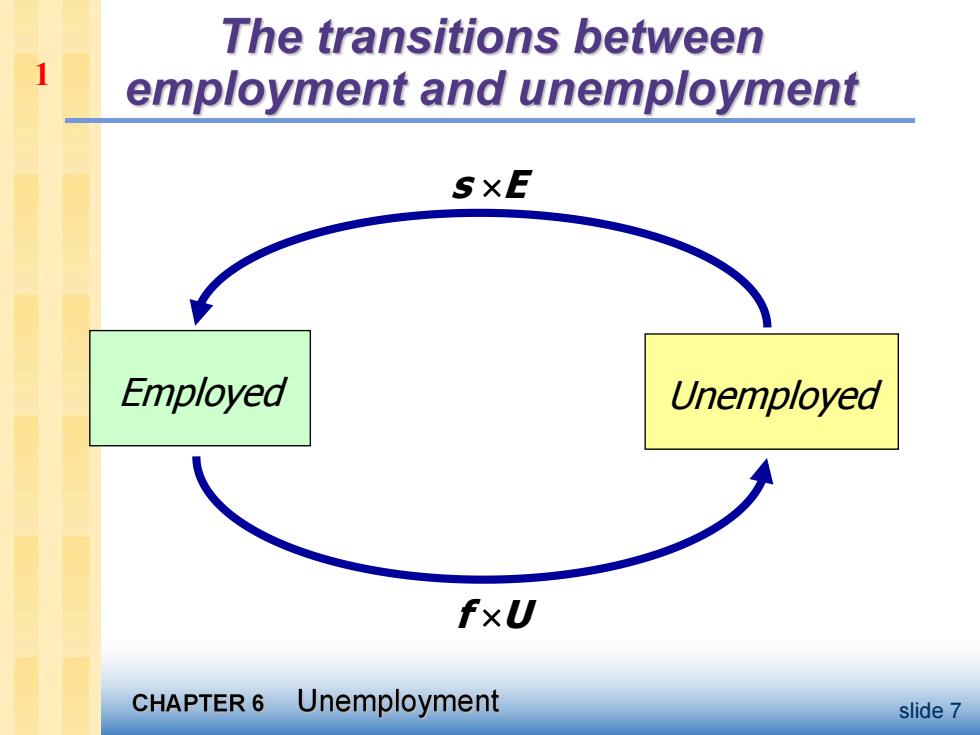
The transitions between employment and unemployment SxE Employed Unemployed fxU CHAPTER 6 Unemployment slide 7
slide 7 Employed Unemployed s E f U 1
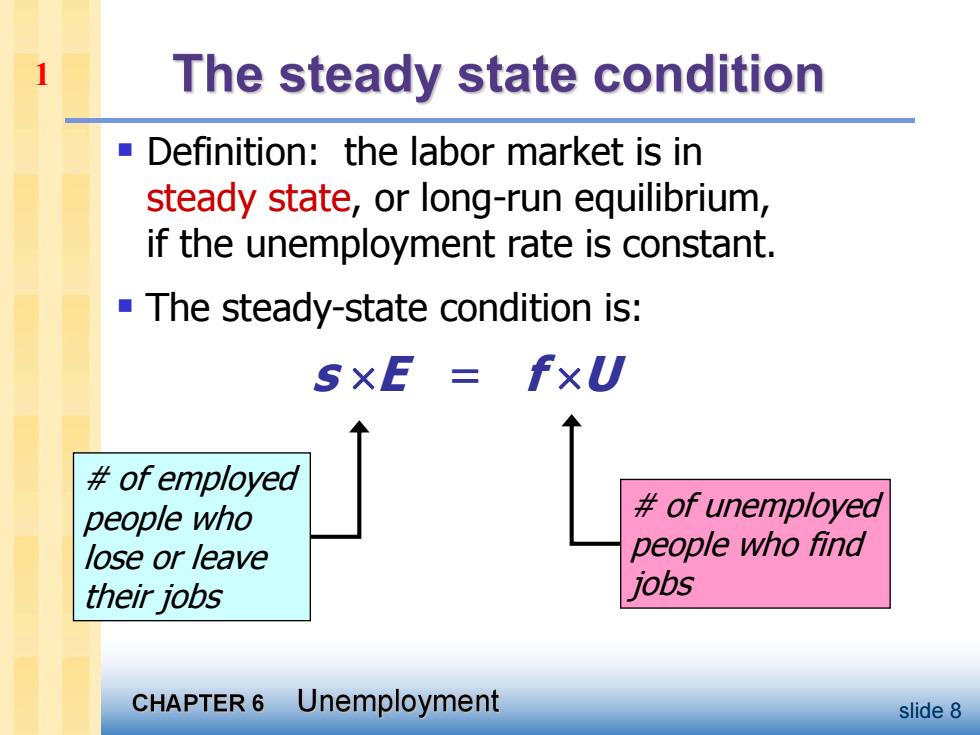
The steady state condition ■ Definition:the labor market is in steady state,or long-run equilibrium, if the unemployment rate is constant. -The steady-state condition is: s×E=fxU of employed people who of unemployed lose or leave people who find their jobs jobs CHAPTER 6 Unemployment slide 8
slide 8 § Definition: the labor market is in steady state, or long-run equilibrium, if the unemployment rate is constant. § The steady-state condition is: s E = f U # of employed people who lose or leave their jobs # of unemployed people who find jobs 1
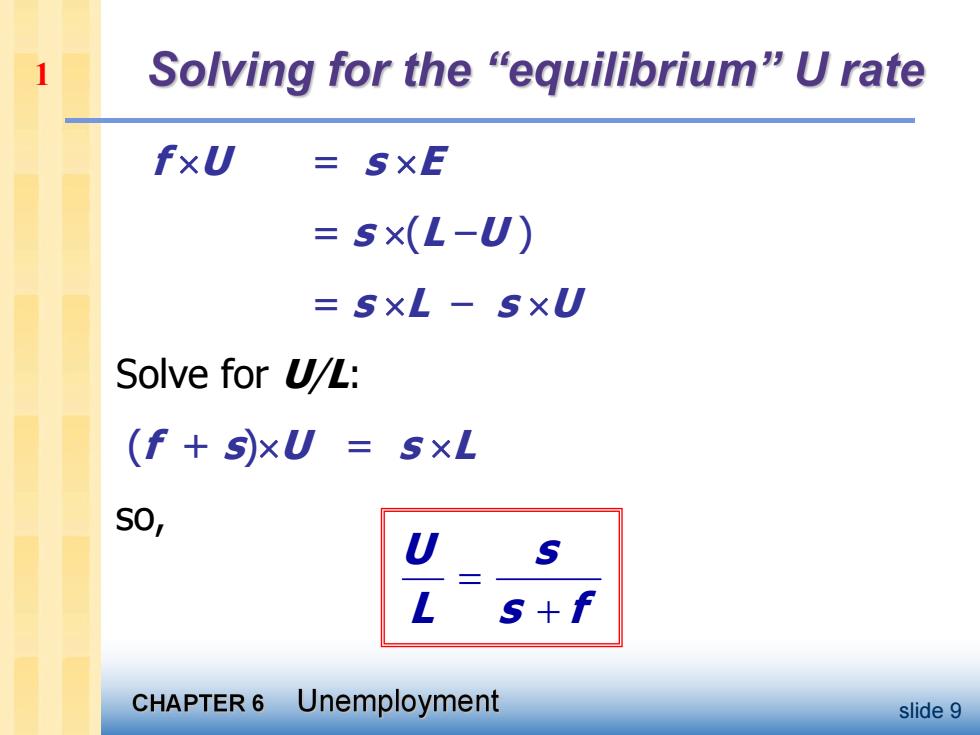
Solving for the“equilibrium”U rate f×U SxE =sx(L-U) SxL-SxU Solve for U/L: (f+SxU=s×L s0, U 5 L s+f CHAPTER 6 Unemployment slide 9
slide 9 f U = s E = s (L –U ) = s L – s U Solve for U/L: (f + s)U = s L so, U s L s f 1